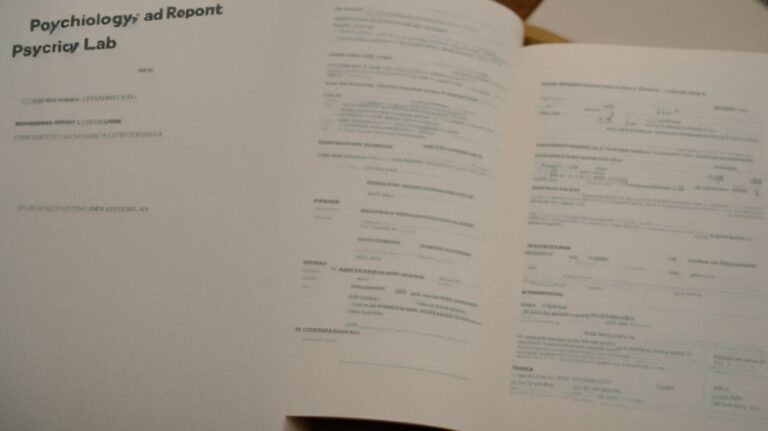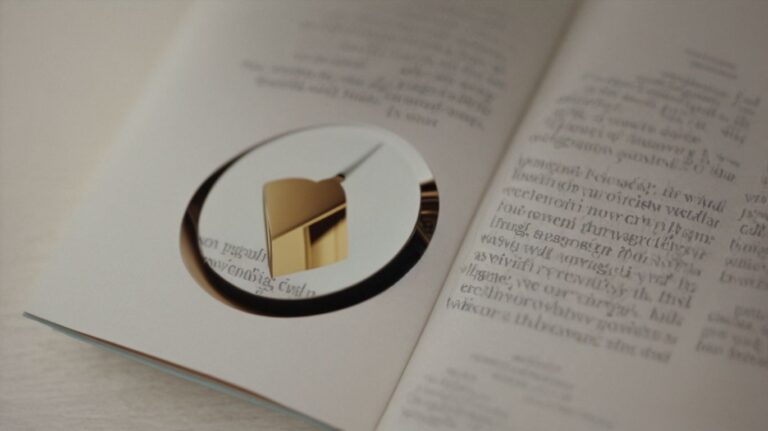Are you curious about the fascinating world of psychological testing? In this article, we will explore the ‘What Do You See in This Picture’ psychology test, a widely used tool in the field of psychology.
We will discuss the purpose of the test, how to administer it, interpreting the results, its limitations, and other similar psychological tests. By the end of this article, you will have a comprehensive understanding of this intriguing test and its significance in the field of psychology. So, let’s dive in!
Contents
Key Takeaways:
- The ‘What Do You See in This Picture’ psychology test can be used to gain insight into an individual’s thoughts, feelings, and personality traits.
- The test requires specific materials and a controlled environment to ensure accurate results.
- Interpreting the results involves analyzing the individual’s responses and considering their potential meanings in context.
What is the Purpose of the Test?
The Rorschach Inkblot Test is a projective psychological assessment aimed at revealing a person’s underlying thought processes, perception, and personality characteristics through their responses to ambiguous inkblot images.
The test was originally developed by Hermann Rorschach, a Swiss psychiatrist, in the early 20th century to assess mental health, personality, and emotional functioning.
When individuals view the inkblots, they project their inner thoughts and emotions onto the ambiguous stimuli, providing valuable insight into their thought patterns, emotional regulation, and interpersonal relationships.
Psychologists analyze the responses by considering various factors such as what aspects of the inkblots the individual focused on, the level of detail they noticed, and the emotions they associate with each image, allowing for a comprehensive understanding of their cognitive processes and personality dynamics.
How to Administer the Test
Administering the Rorschach Inkblot Test requires specific materials and a standardized procedure to ensure accurate results and reliable diagnostic insights in the field of psychology.
What Materials are Needed?
The Rorschach Inkblot Test necessitates specific materials such as inkblot cards, standardized administration instructions, and a conducive testing environment to ensure the reliability and validity of the projective assessment in psychology.
Standardized inkblot cards are crucial for providing participants with consistent stimuli, ensuring that the test results accurately reflect their responses. These cards typically feature a series of symmetrical inkblot patterns, designed to evoke varied interpretations from individuals.
Detailed administration guidelines play a vital role in creating a standardized testing procedure, encompassing instructions on presenting the inkblots, recording responses, and maintaining a neutral demeanor to minimize influencing the participant’s interpretation.
The testing environment must prioritize privacy, quiet, and minimal distractions to foster an atmosphere conducive to open and authentic responses.
This controlled setting contributes to the test’s reliability by reducing external influences on the participant’s interpretations, thereby enhancing the validity of the obtained data.
The combination of these essential materials and a carefully controlled testing environment is fundamental in upholding the integrity of the Rorschach Inkblot Test as a valuable tool in psychological assessment.
How to Set Up the Test?
Setting up the Rorschach Inkblot Test involves creating a conducive testing environment, familiarizing the participant with the procedure, and ensuring standardized administration to facilitate accurate psychological assessment and interpretation of responses.
Before administering the test, it is crucial to ensure that the testing environment is quiet, comfortable, and free from distractions. This can significantly impact the participant’s responses.
Participants should be informed about the general procedure and reassured about the confidentiality of their responses. This helps alleviate any anxiety.
Standardized administration is also important. This includes presenting the inkblots in a specific sequence and recording responses meticulously. These steps are essential to elicit reliable and valid data for interpretation by a qualified examiner.
Interpreting the Results
Interpreting the results of the Rorschach Inkblot Test involves the analysis of responses by trained psychologists to gain insights into an individual’s cognitive processes, emotional functioning, and potential indicators of psychological disorders.
What Do Different Responses Indicate?
Different responses in the Rorschach Inkblot Test provide psychologists with valuable insights into an individual’s perception, cognitive processes, and emotional expression, contributing to the body of knowledge on psychological interpretation and assessment in peer-reviewed articles.
When analyzing these responses, psychologists can gain a deeper understanding of the subject’s ability to perceive and interpret ambiguous stimuli. This sheds light on their thought processes and internal representation of the environment.
The patterns of responses can unveil emotional expression, revealing underlying feelings and psychological states. This can provide insight that may not be readily apparent through verbal communication alone.
How to Analyze the Overall Response?
Analyzing the overall response patterns in the Rorschach Inkblot Test allows psychologists to identify potential indicators of psychological disorders such as schizophrenia, contributing to comprehensive psychological assessment and diagnostic insights.
By examining the frequency and location of responses, psychologists can discern abnormalities that may suggest underlying mental health conditions.
The specific content of the responses, including the nature of objects identified in the inkblots and the associated emotions or explanations, provides valuable clues for evaluating cognitive functioning and emotional expression.
The analysis of cognitive processing dynamics, such as how individuals integrate and process the ambiguous stimuli, offers critical information about perceptual and thought disturbances, often linked to schizophrenia and other psychotic disorders.
Limitations of the Test
The Rorschach Inkblot Test, despite its utility, is not without limitations, encompassing concerns related to subjective interpretation, interrater reliability, and the need for advancements in understanding the underlying neurological processes within the brain during responses.
Other Similar Psychological Tests
Plus the Rorschach Inkblot Test, other psychological assessments, such as the Thematic Apperception Test, offer alternative projective methodologies for exploring personality traits, interpersonal dynamics, and psychological interpretations derived from ambiguous stimuli.
How is the Rorschach Inkblot Test Different?
The Rorschach Inkblot Test distinguishes itself from other psychological assessments through its unique inkblot images, standardized administration protocols, and the influential contributions of psychological figures such as Alfred Binet and John Exner, recognized by the American Psychological Association.
These inkblot images, known for their ambiguous forms, are presented to individuals who are then asked to describe what each one might represent to them. This method aims to uncover the inner workings of the human mind by analyzing the unique interpretations given by the test-taker.
The administration of the test follows strict protocols to maintain its standardization and reliability, adhering to specific guidelines outlined by psychological experts.
Alfred Binet, renowned for his pioneering work in intelligence testing, and John Exner, who contributed significantly to the development and standardization of the Rorschach system, have had a profound impact on the evolution of this test.
Their insights and contributions have been instrumental in shaping the understanding and application of the Rorschach Inkblot Test within the field of psychology.
How is the Thematic Apperception Test Different?
The Thematic Apperception Test differentiates itself from the Rorschach Inkblot Test through its use of storytelling and narrative projection to assess personality dynamics, drawing influence from psychological luminaries such as Carl Gustav Jung and Sigmund Freud.
The Thematic Apperception Test presents a series of ambiguous images to the test-taker, prompting them to develop a story around each image. This reveals underlying thoughts, emotions, and conflicts in a narrative form. In contrast, the Rorschach Inkblot Test utilizes inkblot images for free association.
This reflects unconscious aspects of personality through perceptual and cognitive processes. Both tests tap into the deep-seated layers of the mind, yet the Thematic Apperception Test elicits overt storytelling, while the Rorschach Inkblot Test relies on spontaneous responses to ambiguous stimuli.
Conclusion
The Rorschach Inkblot Test stands as a comprehensive projective assessment tool in psychology, providing valuable insights into diagnostic interpretation, perception, and personality traits through the analysis of responses to ambiguous inkblot images.
By examining the individual’s responses to the inkblots, psychologists can gain a deeper understanding of their thought processes, emotional functioning, and potential underlying psychological issues.
The test allows for the exploration of both conscious and unconscious aspects of the respondent’s personality, aiding in the formulation of accurate diagnoses and tailored treatment plans.
References
Explore the references and sources related to the Rorschach Inkblot Test, featuring authoritative works by the American Psychological Association, scholarly literature, and contributions from renowned experts such as Kendra Cherry, MSEd.
The Rorschach Inkblot Test has been a subject of in-depth study and analysis within the field of psychology. Demonstrating a complex and nuanced assessment, it has garnered significant attention and research from a wide array of experts.
Notable works by renowned psychologists, such as John Exner, Jr. and Irving B. Weiner, provide invaluable insights into the development and application of this iconic test.
Numerous empirical studies published in esteemed peer-reviewed journals, including the ‘Journal of Personality Assessment’ and ‘Psychological Assessment,’ further enrich the literature on the topic.
Frequently Asked Questions
What is the ‘What Do You See in This Picture’ Psychology Test?
The ‘What Do You See in This Picture’ Psychology Test is a projective test that is used by psychologists to assess a person’s unconscious thoughts and feelings by analyzing their interpretation of a given image.
How does the test work?
The test involves showing a person a series of pictures and asking them to describe what they see in each one. The psychologist then analyzes the person’s responses and identifies underlying themes and patterns to gain insight into their subconscious mind.
What is the purpose of the test?
The purpose of the ‘What Do You See in This Picture’ Psychology Test is to gain a deeper understanding of a person’s thoughts, emotions, and motivations that may be hidden from their conscious awareness. It can also be used to identify any underlying psychological issues or conflicts.
Is the test reliable?
The ‘What Do You See in This Picture’ Psychology Test is considered to be a reliable psychological tool when administered and interpreted by a trained professional. However, like any other psychological test, it is not 100% accurate and should not be used as the sole basis for making a diagnosis.
What kind of images are used in the test?
The images used in the ‘What Do You See in This Picture’ Psychology Test can vary and may include abstract or ambiguous pictures, as well as more concrete and recognizable images. The type of image used can affect the individual’s interpretation and the insights gained from the test.
Can the results of the test be interpreted differently?
Yes, the results of the ‘What Do You See in This Picture’ Psychology Test can be interpreted differently by different psychologists. It is important to note that the interpretation of the test is not a definitive answer, but rather a starting point for further exploration and understanding.




